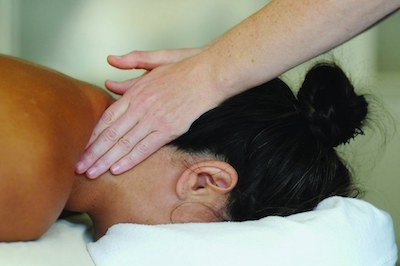Water treatments, especially when combined with healing touch, may be the very oldest and most revered of all healing modalities. Pain from injuries, issues from damaged muscles and joints, circulation problems, chronic tension, chronic pain and emotional stress have long inspired healers to relieve suffering this way.
From ancient Rome’s great baths to Russian saunas, Indian Ayurvedic steams, Native American sweat lodges, Turkish baths and Japanese hot springs, peoples the world over use and love hydrotherapy and massage together. In Germany, the warm waters of Baden-Baden have been used for over eight thousand years, and in Bath, England, for ten thousand. 2800 years ago, Irish sweat houses made of sod and stone were used for rheumatism. Breitenbush Hot Springs here in Oregon has been a popular spot for many years, offering hot water, steam, cold plunges and massage on site.
Here’s how water treatments can improve your effectiveness:
Like massage, hydrotherapy can relieve discomfort and pain, stimulate the flow of blood and lymph, and make connective tissues more pliable and comfortable to the touch. Hydrotherapy is soothing and stress-reducing. The ancients realized the effect depression and stress can have upon a person, and over centuries, chronic depression was called everything from gloom or melancholia to neurasthenia or dysthymia. In ancient Greece, while warriors bathed to reduce fatigue and promote wound healing, warm baths were also ordered to relieve “dejection and low spirits.” The founder of modern psychiatry, Philippe Pinel, (1745-1826) recommended warm baths to calm “overwrought nerves.” Watsu or aquatic bodywork is deeply soothing. Longtime hydrotherapy teacher Helena Tolis, RN, says that warm water is “Liquid Love”.
So what is it about hydrotherapy that helps release stress and tension?
According to cognitive psychologist John Bargh, physical feelings of warmth are linked early in life to feelings of safety, and we subconsciously associate physical warmth with emotional warmth. “Especially with animals that breastfeed their infants, the experience of being fed and held and protected goes hand in glove with feelings of warmth and closeness…the positive response to heat is hardwired into our brains.” This helps to explain the deep enjoyment and relaxation our clients experience when we use any warm treatment before or during a session.
Whole-body heating has antidepressant effects because it activates specific brain areas that are important for the regulation of mood and body temperature and so a steam bath, sauna, or even a warm shower before a session will help the client calm and settle before the bodywork begins. A simple warming body wrap can be made with blankets and the client’s head, neck and feet massaged while the wrap is in place. Partial-body treatments have that soothing effect as well. For example, a warm moist pack over the spine, a paraffin dip for arthritic hands, warm compresses over the face for TMD, a heat lamp or heating pad over a painful knee, and many other local heat treatments can help clients feel safe and relaxed and get the most out of their sessions. When clients arrive for sessions chilled, tense or uptight, a warm treatment is a great help and also a treat for them.
Article by instructor, author, and therapist Marybetts Sinclair, LMT #644
https://www.marybettssinclair.com/







